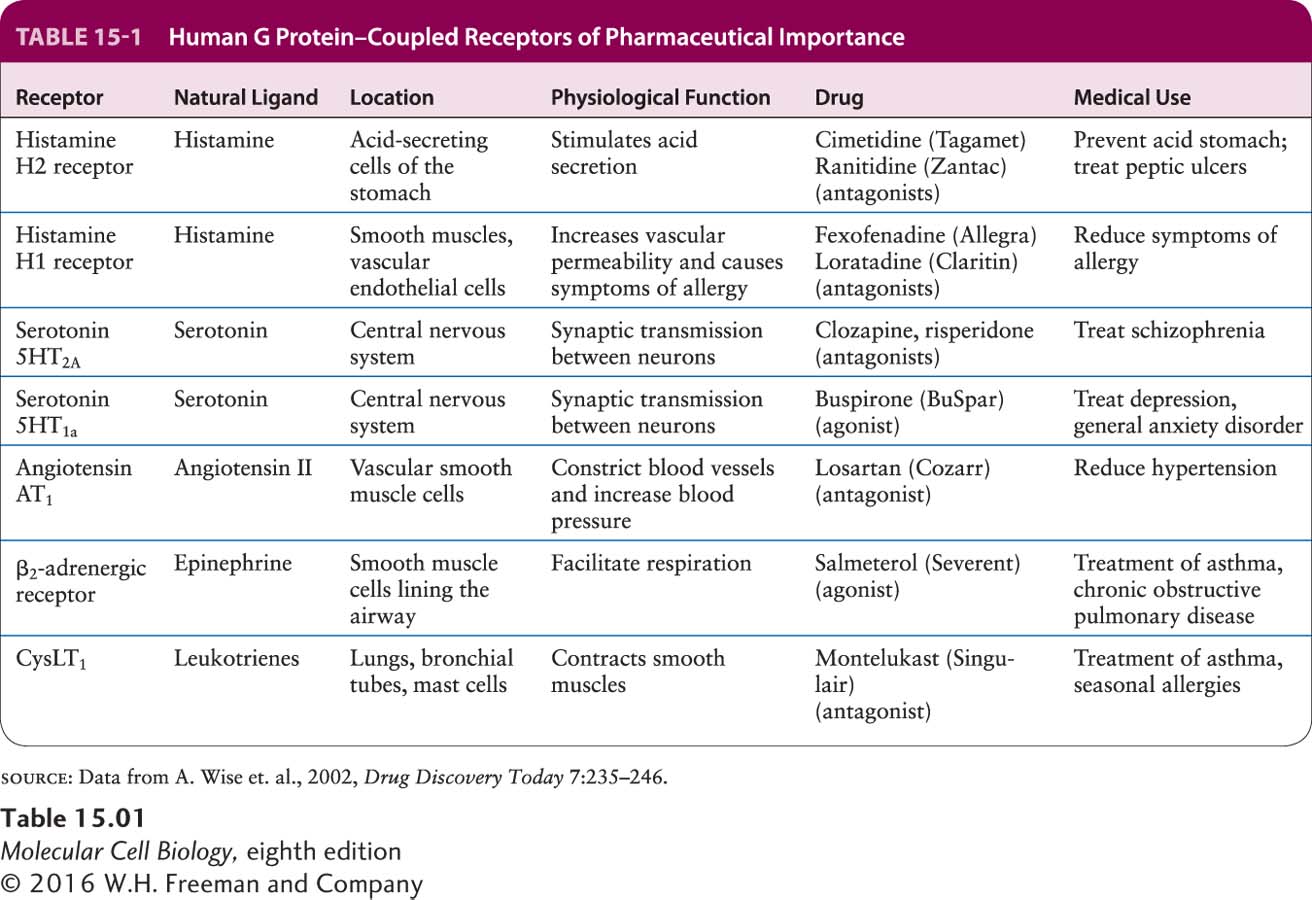15.3 G Protein–Coupled Receptors: Structure and Mechanism
As noted above, perhaps the most numerous class of receptors are the G protein–coupled receptors (GPCRs). In humans, GPCRs are used to detect and respond to many different types of signals, including neurotransmitters, hormones involved in glycogen and fat metabolism, and even photons of light. Many GPCRs are found primarily in cells of the central nervous system and are used in neuronal signaling, as we will learn in Chapter 22. GPCRs are of immense medical importance, as approximately 30 percent of all drugs used in humans are agonists or antagonists of specific GPCRs or groups of closely related GPCRs. Table 15-1 describes just a few of these drugs; note the wide variety of receptors targeted by these drugs and the diverse diseases that they treat.
Despite this diversity, all GPCR signal transduction pathways share the following common elements: (1) a receptor that contains seven membrane-spanning α helices; (2) a heterotrimeric G protein, which functions as a receptor-activated switch by cycling between active and inactive forms; (3) a membrane-bound effector protein; and (4) proteins that participate in desensitization of the signaling pathway. Second messengers are also a part of many GPCR pathways. GPCR pathways usually have short-term effects in the cell by quickly modifying existing proteins, either enzymes or ion channels. Thus these pathways allow cells to respond rapidly to a variety of signals, whether they are environmental stimuli such as light or hormonal stimuli such as epinephrine.
In this section, we discuss the basic structure and mechanism of GPCRs and their associated heterotrimeric G proteins. In Sections 15.4 through 15.6, we describe GPCR pathways that activate several different effector proteins.
